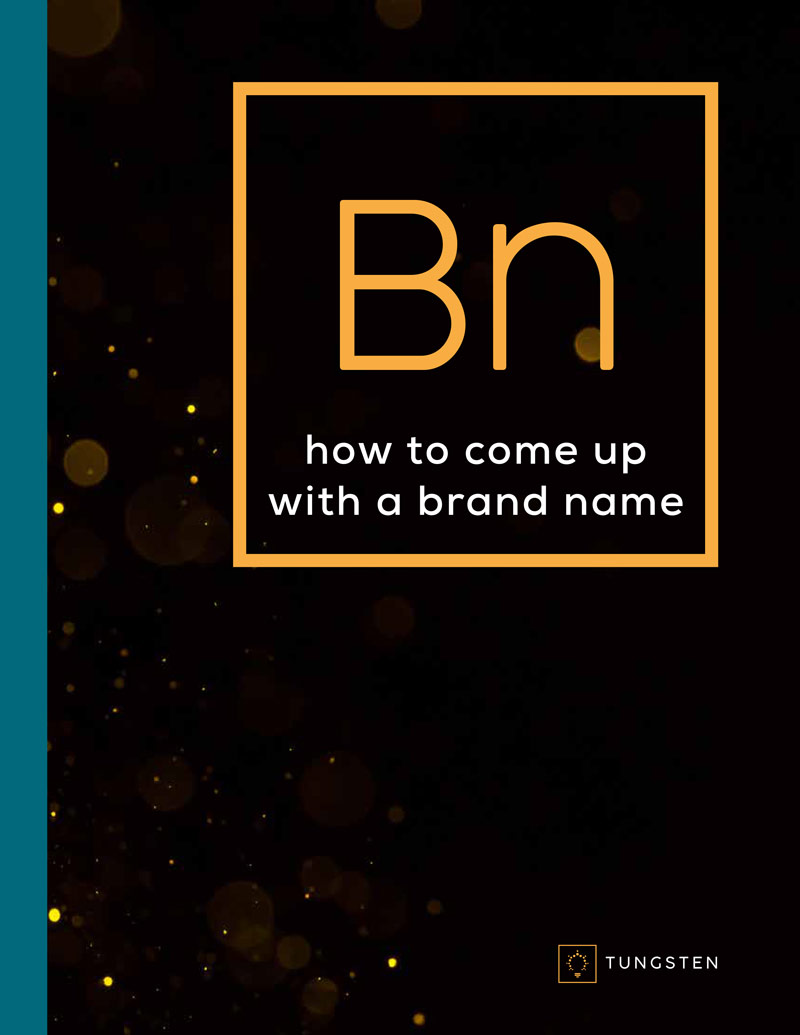Branding a small business or start up can have it’s share of challenges — the two biggest ones being lack of money and know-how. Here are some inside tips from a branding expert on how you can do the job yourself, at a fraction of the cost.
1. Identify your company’s “pivot point.”
In a rush to go to market, most new business owners don’t think through the real value proposition of their business. They confuse what they do for why they do it. The shocking secret is that no one will want to buy your product or service… they will want to buy what your products or services do for them. So look for that key benefit or promise that you will deliver. Are you selling expensive jewelry or exclusivity and status? Are you selling houses or providing a sense of empowerment and independence? What is the “it” behind your business? What is your company’s reason for being? One firm came to us to name their online children’s book club. They wanted to call it “Readeor” (reading + meteor) but the real payoff was not in the books, but the parent/child bonding experience. In the end we named them Early Moments, with the tag line “Sharing the gift of reading. So take time to discover that key attribute and then you can begin to build your brand identity around it.
2. Brainstorm Ideas
Once you have a firm grasp on what your company is really about, the true benefit you provide, then start generating ideas. Think in terms of names and phrases that will provide you with a theme or platform. The name doesn’t need to be literal or descriptive, but it does need to be engaging, capture the essence of your brand’s key attribute, and beg the statement “Tell me more!” Our name Tungsten, the wire in the light bulb, allows us to talk more broadly about brilliance, insight, clarity, illumination, and bright ideas. Don’t limit yourself to one type of naming strategy. You can use metaphors, made up names, word combinations, positive connotation words, etc. A great example is OnStar™, which says nothing about vehicle safety, yet beautifully communicates the notion of direction and guidance. To help generate ideas, buy magazines that fit your brand’s message and look for words, phrases, titles, and headlines that might spark an idea. Compile your lists freely and without judgment at this point, keeping your company pivot point as your focus.
3. Narrow the list
At this point you are probably mentally exhausted, so take a break. Let all the ideas simmer at least one night so you can review them with a fresh set of eyes. Start winnowing the list, keeping only the names that resonate with you and allow your company plenty of room to grow. Experiment with matching tag lines. Sometimes the pairing of a company name and tag line makes all the difference. A good example is a company we named ParkPlace… “The Ultimate Garage Space.” Together, the name and tag line paints the complete picture of high end garage conversions. Once you have your list of finalists down to the top five to ten, look for matching, or closely matching domain names. Do a search of the name on http://uspto.gov to see if there are any matches. Google the names to see if there are any obvious competitors using something similar. That should narrow the list even further. Ask for input about the names only after setting the stage, giving the listener a sense of the context and then asking if the name conveys that feeling. Don’t just ask if someone likes a name… no one would ever have said Apple makes them think of computers. Remember, you are conveying your pivot point, not your products and services. Think Best Buy vs. CompUSA.
4. Pick your winner and get on with it!
Too much time is often spent over-analyzing names. If it sounds good, people are curious and ask the right questions, and the domain is available, you probably have a winner. To be on the safe side, hire a TM attorney to make sure you won’t have any problems. Match up the name with a great tag line and then move on to logo design. There are thousands of designers out there, but a good source for those on a budget is LogoWorks.com For a few hundred dollars they can knock out a great look, with matching business card, letterhead, and envelope artwork. Plus they are now owned by HP, which makes them a safe bet.
5. Launch your new brand!
This is where it really gets fun. Begin the business of spreading your brand message. The key to successful branding is consistency, so be sure to have the same look and feel on everything you create, from your web site and blog to your Facebook and Twitter pages. The goal is to own your own place in your industry and that requires driving your message home whenever and wherever possible.
By investing the necessary time, attention, and commitment to your company brand, you can build a business that resonates with your core values — something that transcends your products and services and will have them coming back for more, again and again. So roll up your sleeves, sharpen your pencils, and create something truly brilliant!
About the author: With over twenty five years of company naming and branding expertise, Tungsten founder Phil Davis is a marketing and advertising veteran, having personally named over 250 companies, products and services worldwide. As a sought after branding expert, Phil has been quoted in The Wall Street Journal, Inc.com, Businessweek, Entrepreneur, and Newsday.
BY Phil Davis
Brand Naming Expert
With over twenty-five years of company naming and branding expertise, Tungsten founder Phil Davis is a marketing and advertising veteran, having personally named over 250 companies, products and services worldwide. As a sought-after naming expert, Phil has been quoted in The Wall Street Journal, Inc.com, Businessweek, Entrepreneur, and Newsday.




